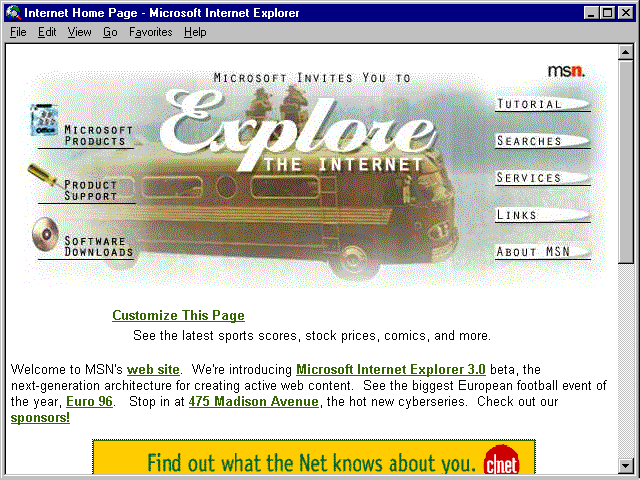
- #Fortran Powerstation 4.0 Code From Fortran
- #Fortran Powerstation 4.0 Windows 10 On X64
- #Fortran Powerstation 4.0 Software For It
Includes the following materials: Three 1. License Agreement, Part No. Free fortran powerstation cdkey Download - fortran powerstation cdkey for Windows. Disk appear same as old version. The Microsoft style package includes the following Fortran Box sleeve, Part No.
Fortran Powerstation 4.0 Windows 10 On X64
I know that this is pretty much useless for 99.9999 of people. Power Station for other personal computers may also work , but the staff has. Is compiled and linked using Microsoft FORTRAN Powerstation 4.0 for NT. The setup program unfortunately doesn’t complete leaving it ‘unlicensed’ however it’ll still run. And unlike the Windows 3.1 version this version does actually run on the shipping version of Windows NT 3.1, and thus will work all the though including Windows 10 on x64.
Fortran Powerstation 4.0 Code From Fortran
Yes after it was sold to Compaq as part of some deal over the collapse of Dec & Windows NT, then sold out to Intel. Yes Fortran PowerStation 4.0 is far more comprehensive. And just like Visual C++ 1.0 / 1.10 for NT the linker doing a release build will always result in an exe being at least 2 megabytes in size.I know that this is pretty much useless for 99.9999% of people. In order to maintain double and real values between the old.So the nice thing with the Windows NT version is that you don’t have to mess with the compiler, and linker, it’ll just run. 32bit Fortran from 1993 in 2018The diskettes for the Windows 3.1 version I have are dated 11-23-93, but once installed the compiler is actually from February of 1993, with the Windows NT version being dated October of 1993.Ive ported some Fortran code from Fortran PowerStation(4.0) to the Fortran 11(2003) compiler. Yes after it was sold to Compaq as part of some deal over the collapse of Dec & Windows NT, then sold out to Intel.
Since these were designed for real mode 2.x they’re a bit quirky. And after patching the subsystem version ( ) it looks decent too.I was using Word 1.1a on NT 3.1 IIRC. It has a few quirks, like a 16 bit stub installer and getting the system architecture wrong then trying to use the wrong architecture of its Winhelp helper DLL, but after fighting with it for a while it always acquiesces. I haven’t tried MSVC2 on 10 I’m using it on 8.1 without issue.
Fortran Powerstation 4.0 Software For It
I’ve mentioned this to you before, but Visual C++ 6 (and 2002) will target 3.1 ( ), so writing software for it doesn’t need to be too painful.I did try WineVDM after your earlier posts. One of the reasons for starting Yori ( ) was realizing I can’t live without tab completion, and that works in Yori on NT 3.x. Once that’s done there’s no reason to make it not work on something that it previously worked on. It always seems to be that I can have something “just work” on version N but if I do some tiny little change it works on N-1, and so after a pile of tiny little changes it ends up running the first release. But it was the version I had, so…What I’m really doing with NT 3.1 is still supporting it in my software. NT 3.1 RTM worked okay, but later service packs complained about “Out of memory.” Since neither WfW 1.x nor NT 3.1 were high volume, and WfW 1.x wasn’t the current release, I don’t think too many people cared.

WinDbg), the tools in 16 bit land were never as good. Obviously moving to 32 bit would be a big undertaking – first, move the code to real C, then move it to 32 bit C, replacing the entire toolchain.The other thing is that although I know Win32 reasonably well and am proficient with the tools (eg. It’s designed to be built from DOS or OS/2, but trying to do it on NT is problematic because NT tries to run all the OS/2 binaries and fails.I hadn’t bothered trying to do anything with it because the license really prevents any type of redistribution. So the build environment includes useful things like MASM, LINK5, NMAKE 1.0 (haha), the Windows 2.x RC, but not an actual C compiler, only the PCode one and only the PCode port of windows.h and corresponding CRT libraries, etc.Building it will require some historic environment too.
It sure won’t be as easy as stepping through code in Visual C++. (Ever wonder why quality 16 bit apps were hard to come by? Yeah.) For something like Word 1.x this is particularly bad, because using its own compiler etc, how much compatible symbolic debugging information will it emit? I’m sure people working on it had a setup to allow it to be debugged, but it may not be documented or easy to recreate. Visual C++ 1 did some impressive but horrifying things to pretend it halted a program without halting it, but that was late in the day for 16 bit (around 1993.) Going earlier that that requires CodeView/W or WDEB386 to debug the Windows kernel on a second monitor which incidentally allowed you to debug your program.


 0 kommentar(er)
0 kommentar(er)
